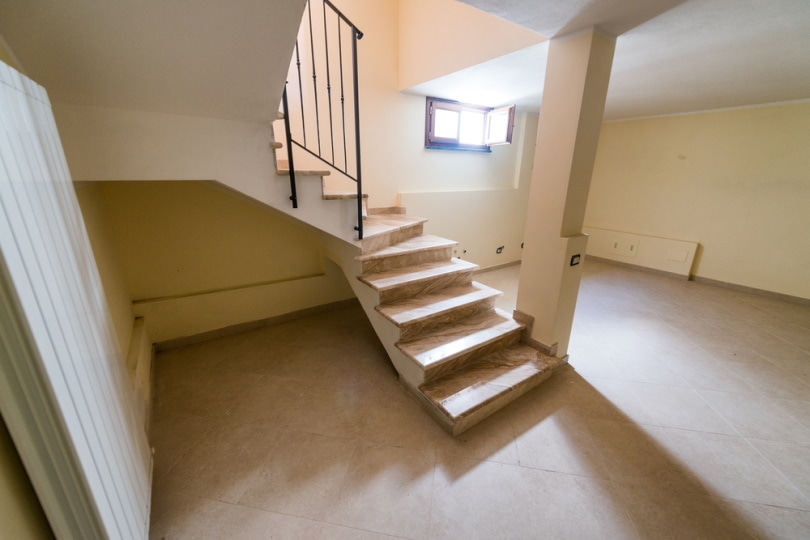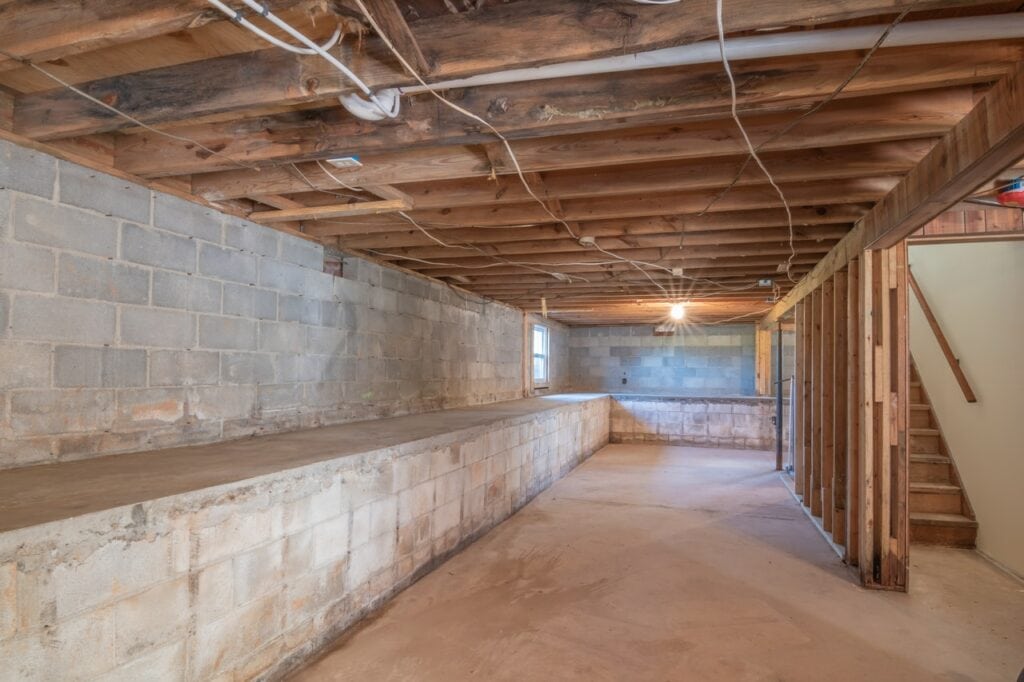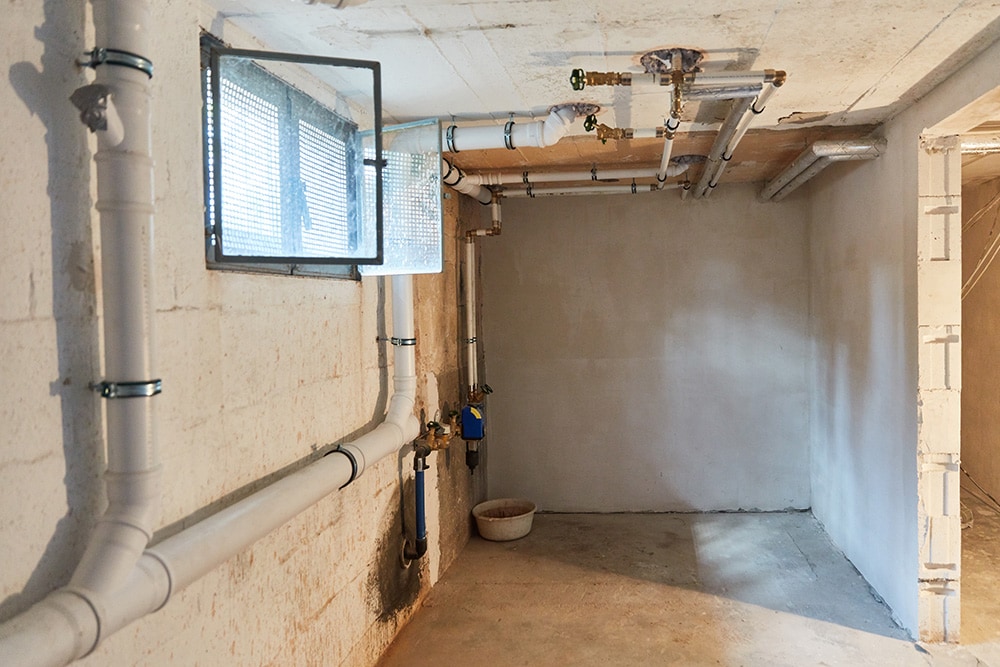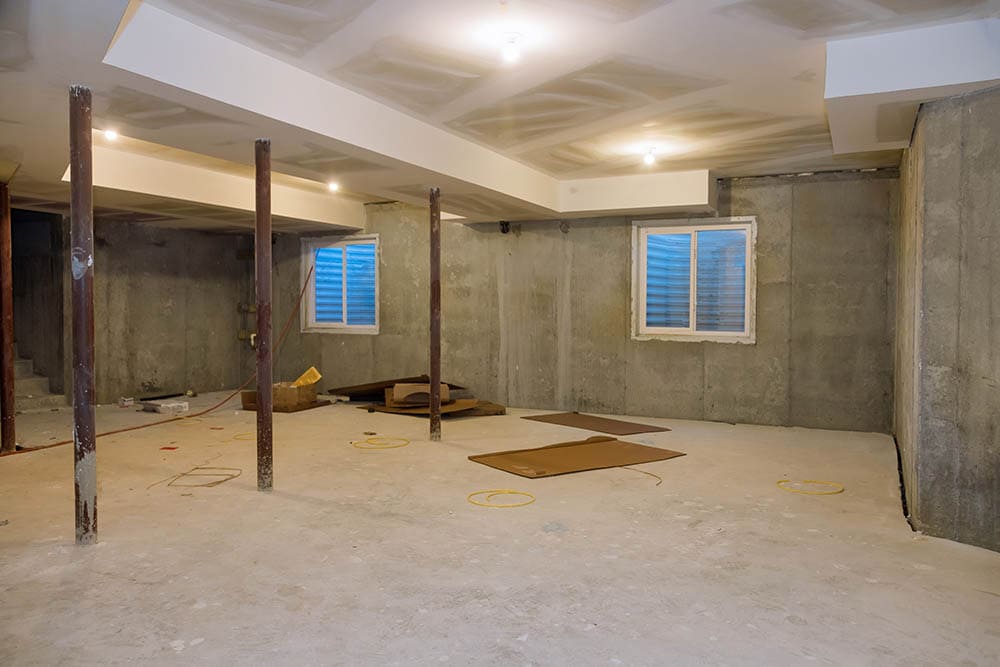How Much Does It Cost to Waterproof a Basement? (Updated in 2025)
-
Pete Ortiz
- Last updated:

Of all the parts in a house, it’s usually the basement that “takes the hit” during a flood. Then you’ve got burst pipes, clogged tubes, and overflow, not to mention termites. So, unless you want water/humidity to take over your basement and ruin it, do consider waterproofing it. While it won’t be cheap, in the long run, you will greatly benefit from this.
What’s the average cost of waterproofing a basement? What’s the best way to do it? Does the price differ depending on where you live? Can the average homeowner waterproof a basement on their own? What additional costs should you expect? And finally, do insurance companies pay for water damage in the basement? The average cost in the States is $3,000–7,000, with most homeowners paying around $5,000. Keep reading as we explain further.
 The Importance of Waterproofing the Basement
The Importance of Waterproofing the Basement
The main goal of waterproofing is to protect the walls and the floor from water penetration which leads to decay, rot, and insects. If you live somewhere in the American South, floods can be a big issue. This won’t happen overnight, of course, but slowly yet steadily, constant exposure to water will damage the structural integrity of the house, not to mention cause health problems.
Besides, even when it doesn’t rain, and there’s no physical contact with water, abnormal humidity levels will still do a number both on the basement and the foundation. The bottom line is—without proper waterproofing, it will be almost impossible to protect the basement from rot, mold, and deterioration.

How Much Does Professional Basement Waterproofing Cost?
This greatly depends on the size of the basement, the location, materials, techniques, and more. That’s exactly why the price range on this is so wide. With that said, the average cost in the States is $3,000–7,000, with most homeowners paying around $5,000. If you’re on a tight budget and only want to seal the interior walls and maybe fix some cracks here and there, that will cost $700–1,500.
In contrast, a full-fledged waterproofing system that includes not only sealing but also installing a sump pump, drainage system, and some extras will set you back $10,000–15,000. The first thing to do before contacting any contractors is to measure the size of the basement in square feet or linear feet and assess the damage (if any) to the interior. This way, you’ll know in advance approximately how much you’ll have to pay:
- The average cost in the US: $3,000–7,000
- How much most homeowners pay: $4,500–5,500
- Low-end waterproofing cost: $700–1,500
- High-end waterproofing cost: $10,000–15,000
- Cost per square foot: $3–10
- Cost per linear foot: $50–100
Basement Waterproofing Cost By Different Regions
The United States is one of the biggest countries in the world with a very diverse pricing policy. For someone that lives on the West Coast, the cost of waterproofing a basement on the East will seem a bit too steep. The Southern states, in turn, are usually relatively cheap, with the Midwest sitting right in the middle and offering services at a reasonable price.
- The East Coast: $5,000–8,000
- The North Coast: $4,700–7,500
- Midwest US: $4,000–6,700
- The West Coast: $4,500–6,800
- South-Atlantic States: $4,200–6,300

Basement Waterproofing Cost By Square Feet
As mentioned, before you get any work done, you need to grab a measuring tape and, well, measure the size of the basement in square feet. You do that by multiplying its length by its width.
- 500 square feet: $1,500–5,000
- 800 square feet: $2,500–8,000
- 1,000 square feet: $3,000–9,000
- 1,500 square feet: $5,000–$15,000
Interior vs Exterior Waterproofing
Should you “fortify” the basement from the inside or the outside? Exterior waterproofing has proven to be more effective than when it’s done from the interior. But, it’s also more expensive. If you’re just laying the foundation for a future home, it will be much easier to make it water-resistant from the outside. Interior waterproofing, in turn, is more common for existing houses.
Sealing is the most common choice, along with installing a sump pump and maybe a French drain, also known as a weeping tile. But wait—can’t you waterproof the basement’s exterior after it’s built? Technically, this is possible but can be very dangerous and will cost significantly more. On average, interior waterproofing costs $500–10,000. To seal the exterior, you’ll have to pay $3,000–15,000.

Basement Interior Waterproofing Cost By Method/Technique
Alright, now let’s focus on the available options when waterproofing the basement from the inside. If you’re on a tight budget, using water-resistant paint will be your best bet. Sealing is relatively cheap as well. Acrylic sealants are available for $3–4 per square foot. Silicate is a bit more expensive ($4–6), with epoxy being the priciest pick ($5–8). For the best results, it’s common for homeowners to combine different solutions:
- Waterproofing paint (goes over bare concrete; the cheapest option): $1–2.5 per sq. ft.
- Sealing the basement (doesn’t affect walls visually; more effective than paint): $3–8 per sq. ft.
- French drain (collects and redirects excessive water; takes time to install): $60–70 per linear foot
- Epoxy (these injects are very effective against cracks; 100% waterproof): $400–550 per treated crack
- Sump pump (the ultimate solution, works great with a French drain): $800–1,700 per unit
Basement Exterior Waterproofing Cost By Method/Technique
To successfully fight floods and other disasters, you need to waterproof the exterior. Earlier, we mentioned that exterior waterproofing is very expensive and dangerous when performed on an already-built house, and that’s very much true. For exterior wall sealing, you will have to dig the soil out, apply the solution, and put all the dirt back in. You can go with sheet membranes ($3–8) or liquid membranes (a bit cheaper, $3–7).
Bentonite sheets ($3–5) are also available. With that said, there are some great options that don’t require accessing the foundation in any way, like gutters:
- Gutters (great at directing water away, but get clogged easily): $5–35 per linear foot
- Sealing the walls (effective, but only works on 100% exposed walls): $4–8 per linear foot
- Cement waterproofing/parging (cheap; weak against natural elements) $1,000–1,500
- Window wells (very expensive, yet reliable and keep water away from windows): $600–1,600 per well
- Exterior French drain (can direct collected water to a sump pump): $90–100 per linear foot
- Excavation work (expensive, takes time and effort; has to be done before sealing): $120–230 per linear foot
Additional Costs to Anticipate
Waterproofing a basement involves installing a French drain, and gutters, sealing the walls, painting them, and using epoxy against cracks—we already covered that. So, what about extra costs? Are there any additional expenses involved? The answer is yes, but the list isn’t that big:
- Full waterproofing inspection: $300–500
- Cleaning dirty gutters: $1–2.5 per linear foot
- Repairing a basement leak: $400–500
- Professional mold removal: $1,000–3,000
- Underground downspouts: $30–35 per spout
- Fixing water damage: $3,000
- Flood cleanup: $3,500–4,000
- Dehumidifier for the basement: $50–500
Can You Waterproof a Basement Manually?
If you don’t want to pay a contractor, you can try and waterproof the basement on your own. As long as the job doesn’t involve excavating or installing a French drain or a sump pump, it shouldn’t be very hard to handle. We’re talking about using waterproofing paint, sealant, epoxy, or even installing a set of gutters.
Sealant materials are easy to roll on; paint takes even less effort to apply. There are lots of decent-quality and cheap options on the market, including Drylock (a sealant), Flex Seal (a rubberized paint), and others. If the damage is minor, these solutions can be quite effective at dealing with it.

Does Home Insurance Cover Water Damage to the Basement?
It all depends on where you live, the local laws (both state and city), and the nature of the damages. The good news is—most insurance companies will pay for water damage to the basement. However, you’ll only be financed when the damage is sudden. We’re talking about burst pipes, broken appliances, and localized overflow.
If the damages were caused by poor maintenance and/or aren’t accidental (the basement is just old and rotten), don’t expect the company to pay a single penny. And what about natural disasters like flooding? This one’s a bit tricky, as it doesn’t always fall into the same category as heavy wind, fire, or thunder. Most standard home insurances don’t cover flooding. For that, you’ll have to opt for flood insurance.
If you live in a humid area that’s vulnerable to flooding or any other natural disaster, we’d recommend getting in contact with your insurance company in advance. This way, you’ll know exactly what to expect from them in case your basement does, indeed, get overwhelmed by water, or something worse happens.
 Conclusion
Conclusion
Waterproofing a basement doesn’t take forever—you’ll be done in 3–5 days max. On the downside, it does cost a pretty penny and usually involves hiring contractors. The prices aren’t unreasonably high, though. And by doing this, you’ll be able to protect not only the basement but also the entire house, saving yourself a headache and expensive repairs.
So, yes, if you live in a hot and humid area, it’s very much recommended to start saving up to get that basement waterproofed. The sooner you do it, the longer the basement will last and the higher the resale value of the house will be. Besides, you’ll get to spend more quality time down there with the moisture gone for good!
- What is waterproofing? Types and advantages
- CorrosionPedia – What Does Waterproofing Mean?
- Does homeowners insurance cover basement flooding?
- Basement Flooding & Insurance – American Family Insurance
- CDC – Basic Facts about Mold and Dampness
- Gov – Flood Insurance
- How Much Does It Cost To Inspect Waterproofing?
- FIXR – How Much Does It Cost to Waterproof a Basement?
- HomeGuide – How Much Does It Cost To Waterproof A Basement?
- A Complete Breakdown on the Cost of Waterproofing a Basement
- How Much Does It Cost To Waterproof A Basement Or Foundation?
- BobVila – Basement Sealing Budgeting Guide
Featured Image Credit: Pisaphotography, Shutterstock
Contents

 The Importance of Waterproofing the Basement
The Importance of Waterproofing the Basement